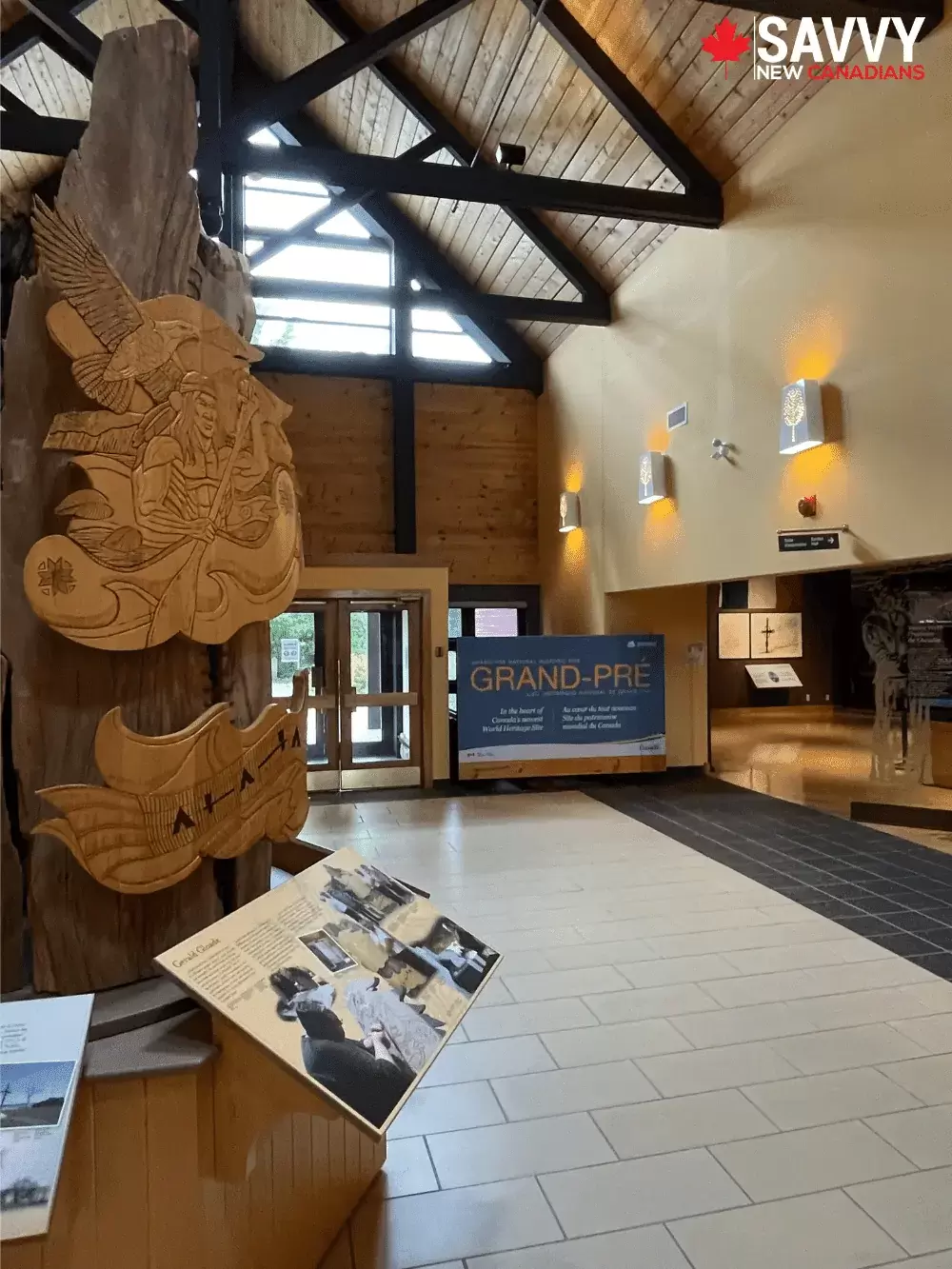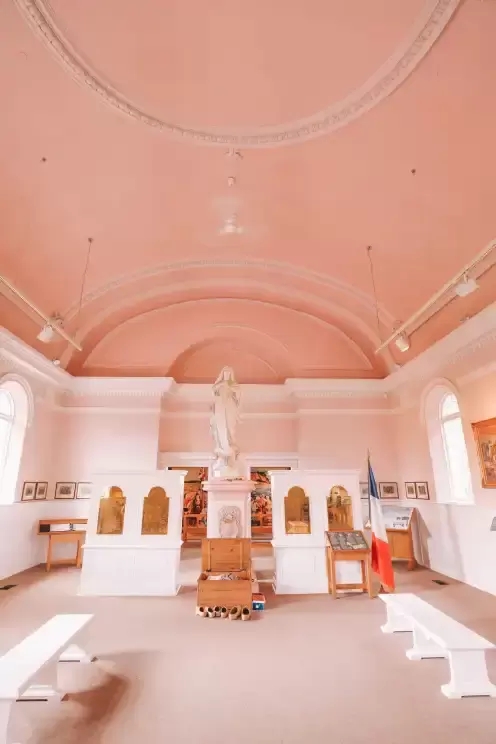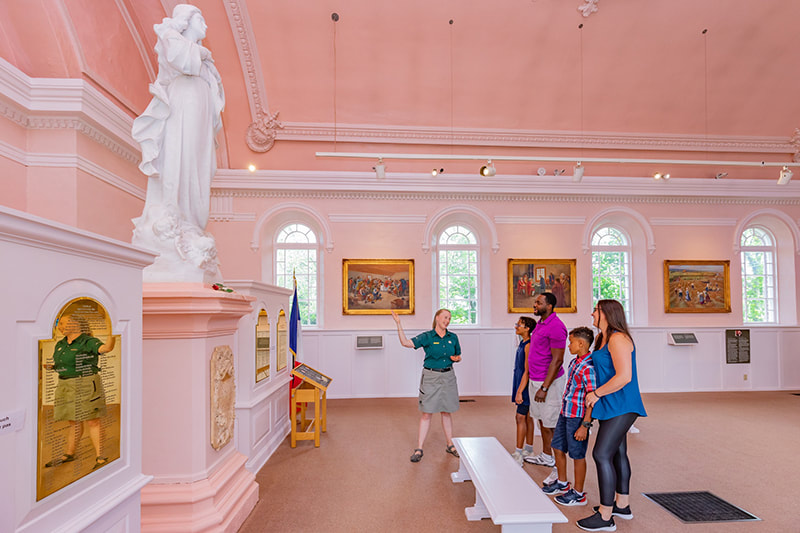Explore Grand-Pré National Historic Site with a Parks Canada interpreter on a guided tour. The Visitors Reception and Interpretation Centre houses a multimedia theatre for historical presentations, an exhibit hall with archeological artifacts and opportunity to learn about the dykeland aboiteau, a gift shop for keepsakes of your visit, a multipurpose room, art gallery, restrooms, picnic area, and the new 110km Harvest Moon Trailway connecting Grand Pré to Annapolis Royal.
Dominion Atlantic sold the land that would become the existing National Historic Site, to the Canadian federal government in 1957. Parks Canada took over operation of the park that was designated a National Historic Site in 1982. The Visitor Reception and Interpretation Centre features exhibits about the history of Grand-Pré and Acadia. A video presentation presents the story of the Acadian deportation.
|
|
Evangeline |
|
The statue of Evangeline was erected in 1920 in celebration of the success of; "A Tale of Acadie,” first published in 1847, a poem written by Henry Wadsworth Longfellow. Millions of people were drawn to the story of a young Acadian couple from the village of Grand-Pré, Evangeline Bellefontaine and Gabriel Lajeunesse, who were separated by the events of the Deportation, followed by a life-time of searching to be reunited. Evangeline became a symbol of the Deportation and the perseverance of the Acadian people.
|
|
Memorial Church |
|
The Memorial Church of Grand-Pré is one of the best examples of a structure built in 1922 to present and commemorate the expulsion of the Acadians. Grand-Pré National Historic Site has become the most significant site of memory for the Acadian people.
|
|
Herbin Cross |
|
In 1907, John Frederic Herbin, poet, historian, and jeweller, and whose mother was Acadian, purchased, with the support of the Town of Wolfville’s mayor and President of Acadia University, the land believed to be the site of the church of Saint-Charles-des-Mines so that it might be protected. The following year the Nova Scotia legislature passed an act to incorporate the Trustees of the Grand-Pré Historic Grounds.
|
|
Henry Wadsworth Longfellow |
|
Henry Wadsworth Longfellow published Evangeline, A Tale of Acadie in 1847, and the poem became culturally important to Acadians. John Frederic Herbin commissioned a bust be made of Longfellow to commemorate the great success of the poem and its impact of Grand Pré.
|
|
The Blacksmith Shop |
|
The blacksmith shop at Grand-Pré National Historic Site demonstrates what this type of installation would have looked like in the 1800’s. At the time, Acadians used blacksmith shops to build agricultural tools as they were in high demand, and essential to the local economy. The western part of Grand-Pré National Historic Site where the blacksmith shop is located provides an opportunity to see the dykelands close-up. It was in this part of the marsh where the Acadians began their dyke building process which eventually included most of the Grand Pré marsh.The western part of Grand-Pré National Historic Site where the blacksmith shop is located provides an opportunity to see the dykelands close-up. It was in this part of the marsh where the Acadians began their dyke building process which eventually included most of the Grand Pré marsh.
|
|
Willow Trees |
|
Grand Pré National Historic Site is home to willow trees that are known to have been planted by Acadian settlers. Parks Canada has classified these trees as cultural artifacts, due to their survival in this space even after the Acadian deportation in 1755.






































